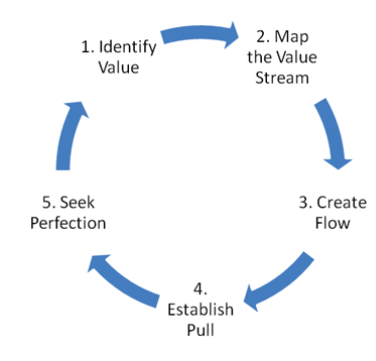Every time a potential client contacts us regarding our services, we are delighted that, yet another business decided to trust us with their project. No matter if it is an app, software, or any other piece of technology they would like us to work on, one of the most important initial questions we will ask is regarding their budget. It is by no means because we want to assess our earnings or whether we will agree to take the job. So, why do we ask? Let us explain the reasoning behind the not-so-comfortable question of ‘how much?’
1. Before we start working on the project – NDA and familiarisation with the project
a. The NDA regulations
At the very beginning of the cooperation with our clients, we often sign a non-disclosure agreement. This agreement is a confidentiality agreement issued by many businesses to protect the data, information, and interests of those businesses. Such a document contains a multitude of regulations and clients’ wishes regarding the safety of certain information they decide to share with us. Any respectable company takes time to review the agreement and inspect whether the terms of the cooperation are suitable and reasonable. Very often, legal advice might be required for us to better understand our client’s needs and assess whether our company is able to provide for them.
In light of the mentioned above, it is crucial to know whether all the NDA regulations are relevant to the service we will provide. It is often the case, especially with smaller projects, that there will not be any need to sign a non-disclosure agreement. And this is precisely why we ask for the budget. We would like to know the scale of the project and its requirements before we sign any binding agreement.
b. It will probably be a simple click of a mouse... will it?
Everything humans do is based on either facts or assumptions. When it comes to new situations more often we tend to trust our assumptions. This human behaviour also applies when it comes to business. Some business owners see only the final effect of their ideas. Little do they realize how much or what type of work is involved in a certain project’s completion. Some have never purchased custom software and therefore have slightly too low expectations of the cost. Truth be told, custom software is not cheap to build or maintain. A budget is a very good example of a so-called reality check. We raise the question about the budget because we not only know the ins and outs of the service. Our Sailing Byte team also provide any costs the client might not have considered. Such costs include, for instance, future maintenance costs, monthly subscriptions, and domain payments.
The budget helps not only us but also (and more importantly) the clients. They can assess whether the costs they expected to incur are realistic or perhaps the assumptions they initially made were incorrect. At this stage, we can also advise or help choose an alternative path to achieve the goal the client set out for. It can either be the change of features of the software or the creation of a slightly different app.
You can read more about the cost of coding professional website in this blog post: https://sailingbyte.com/blog/what-is-the-cost-of-coding-powerful-and-amazing-websites
2. The three types of pricing models
When we are on the subject of advice, the client’s budget also helps us choose the way we should approach the project in question. There are three pricing models we can choose from while working with our clients: T&M, hybrid, and fixed. Every one of them is suitable for different project types; therefore, it is essential for us to know how many resources the client decided to devote to develop a certain app or software. Let me briefly outline the types of project development pricing models and when we apply them:
- T&M (time and materials) – this model of product development means that the client will pay for the project according to the time spent on the completion of that project, as well as the number of materials used during this process. The T&M pricing model is especially beneficial with large, complicated projects or where it is not possible to accurately estimate the extent of the project. Also, the time and materials model works very well when the boundaries of the project are not set, and when it is likely that the requirements will change over time.
- Fixed-price – this type of approach indicates that the price of the project is set and not dependent on materials used or the actual time spent on the completion of the project. This model is used with projects, the costs of which are known in advance. It works perfectly with small, uncomplicated projects which have clear and well-defined requirements.
- Hybrid – this model uses T&M techniques to estimate the cost of a given project in which all the requirements are not specified initially. At the same time, the client pays a fixed price based on the estimation given. This model gives the client a piece of mind regarding the costs but also stresses that there are some parts that may turn out to be more time-consuming or problematic, and therefore the costs might slightly change.
Thanks to the client’s budget, we can initially assess which one of the above-mentioned models will be the most suitable for the client’s project. It allows us to inform the client at an early stage about what the available pricing models are and which one we think will serve best in our cooperation.
3. How we price our services
Although the budget helps to establish many aspects of cooperation with clients, it does not affect one aspect: our pricing. It is obvious that the price of the services does not change depending on whether the client is willing to spend more or less money on a given project. However, some mistakenly assume that revealing the budget, which turns out to be too high, may prompt the developers to inadequately raise the costs of their services or prolong the time of their work. It certainly will not be the case with us. We ask a series of relevant questions about the product and, thanks to our experiences in software development, we can adequately assess how much certain products’ development processes cost. Also, the budget is only known to our client’s representative and a relevant person in charge of the project on our side. Our developer’s estimation provides the pricing based on the time needed to complete a given task, without insight into the client’s budget.
4. What if you do not have a budget?
If you do not know how many resources you should devote to a project, you can book a project consultation during which we can guide you. Based on our knowledge, experience, and expertise we can help with the estimation of the costs of your idea’s implementation. We will not only assess what costs are essential for the project implementation, but we will also advise on future expenses, such as marketing or maintenance costs. Book your consultation now using the form available at sailingbyte.com.






